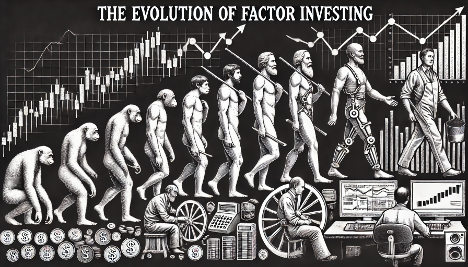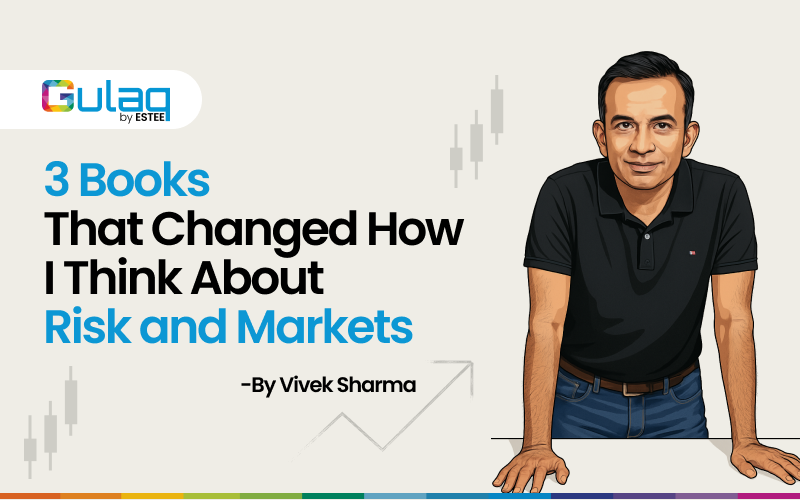
The Evolution of Factor-Based Investing
Imagine you’re a student preparing for an important exam. What are the factors you think will determine your score?
You can be the smartest person in the whole world, but if you don’t handle the exam pressure well, your performance would suffer. Your score, as you might have correctly guessed, depends not just on your IQ but upon a combination of several factors like, the number of hours you studied, your exam temperament, and perhaps even how well you slept the night before. One could quantify all these factors and build a model that predicts the score of any student based on given variables.
Factor investing is not very different from this. In the financial markets, asset prices are driven by various factors. Factor investing is all about identifying and capturing these factors to construct a portfolio. It is a fully quantitative and systematic approach to investing, where each factor represents a different aspect of what might drive an asset’s return.
In this blog, we will explore the evolution of factor-based investing, tracing its journey from the early days of single-factor models to the sophisticated multi-factor strategies used today.
Let’s get started!
1960s: Capital Asset Pricing Model (CAPM)
The roots of factor investing can be traced back to the 1960s when economists like Jack Treynor & William F. Sharpe introduced the world with Capital Asset Pricing Model (CAPM).
CAPM was revolutionary because it introduced the idea that a single factor, known as the “market factor” or “beta,” was the primary driver of stock returns. According to CAPM, a stock’s expected return is a function of its exposure to equity market risk, quantified as beta.
E(Ri)=Rf+βi(E(Rm)-Rf)
The market factor (β) captured the sensitivity of a stock to non-diversifiable risk, also known as systematic risk. CAPM concluded that asset returns are explained by their relative sensitivity to the market.
To put it simply, if a stock has a beta of 1.2, then if the market moves up or down by 10%, the stock is expected to move up or down by 12% on average.
While CAPM was groundbreaking for its time, its major criticism was its oversimplification of the complexities of the real world. It assumed that only one factor, the market, was sufficient to explain asset returns.
1976: Arbitrage Pricing Theory (APT)
The Arbitrage Pricing Theory (APT) was introduced by Stephen Ross in 1976. This marked the birth of modern multi-factor investing.
Unlike CAPM, which relied on a single market factor, APT suggested that several factors could influence asset returns. It offered a more flexible and realistic approach but did not specify the exact number or types of factors to be used—leaving that decision up to the discretion of the analyst.
E(Ri)=Rf+βi1F1+βi2F2+⋯+βinFn
1993: Fama-French Three-Factor Model
In 1993, Eugene F. Fama and Kenneth French introduced their three-factor model, which built upon the CAPM framework by adding two additional factors—size and value—alongside the market factor.
E(Ri)=Rf+βi(Rm-Rf)+si⋅SMB+hi⋅HML
- Market Factor captured the stock’s sensitivity to the overall market, as in CAPM.
- Size Factor considered the company’s market capitalization, with smaller companies often offering higher potential returns compared to larger ones.
- Value Factor looked at a company’s valuation metrics, with “value” stocks (those with lower price-to-earnings ratios) historically outperforming other stocks.
The Fama-French three-factor model significantly improved the explanatory power of portfolio returns. It was able to explain over 90% of the returns of diversified portfolios, compared to the approximately 70% explained by the CAPM.
2012: Carhart Four-Factor Model
In 2012, the Carhart Four-Factor Model extended the Fama-French framework by adding the momentum factor.
E(Ri)=Rf+βi(Rm-Rf)+si⋅SMB+hi⋅HML+mi⋅MOM
The momentum factor is based on the observation that stocks with high returns over the past three to twelve months tend to continue performing well in the near future, while those with poor returns tend to continue underperforming.
This additional factor improved explanatory power for asset returns, making the model more robust and widely applicable in modern finance.
Fama and French later added two additional factors—profitability (quality) and investment—resulting in the Fama-French five-factor model.
Modern Multi Factor Strategies
With advancements in machine learning and artificial intelligence, academicians and practitioners have added numerous factors to the models that they believe further explain asset returns. Factor investing is a completely objective and data-driven approach of investing.
At Gulaq, we use over 100 factors to construct a robust portfolio that is designed to consistently outperform the benchmark. As of July 2024, our portfolios have delivered a compounded average annual return (CAGR) of 60%, compared to 32% of the benchmark—an impressive outperformance of 28%.
We use rigorous analysis to construct our portfolios. Click here to learn more about Gulaq’s quant portfolios .
Summary
Factor investing has evolved significantly since its inception in the 1960s. What began as a single-factor model with CAPM has transformed into a sophisticated multi-factor approach, incorporating a wide array of factors to better explain and predict asset returns.
Factor investing is an objective and data-driven approach to investing, and it is gaining popularity in India. NSE has introduced factor-based strategic indices like Nifty Momentum, Nifty Value, and Nifty Low Volatility. These indices have led to the emergence of several passive index funds that replicate these factor indices, commonly known as beta funds. The future prospects for factor-based investing in India look promising.
At Gulaq, we are committed to harnessing the power of factor-based approaches to serve our clients to the best of our abilities. We believe in the potential of this strategy to deliver superior returns and build robust portfolios.
Thank you for reading!
Related Posts
Process Matters More Than Outcome
I have spent nearly a decade of my life trading energy derivatives, and today I…
Is Market Cap the Best Way to Build an Index?
Nifty 50 is a free-float weighted index – a slight variation of market cap weighted…
3 Books That Changed How I Think About Risk and Markets
Over the past two decades, I’ve built a quiet but consistent habit — reading. Not…
All Nifty Bees Are Equal — But Some Are More Equal Than Others
The title, inspired by George Orwell’s classic Animal Farm, perfectly captures the essence of this…








